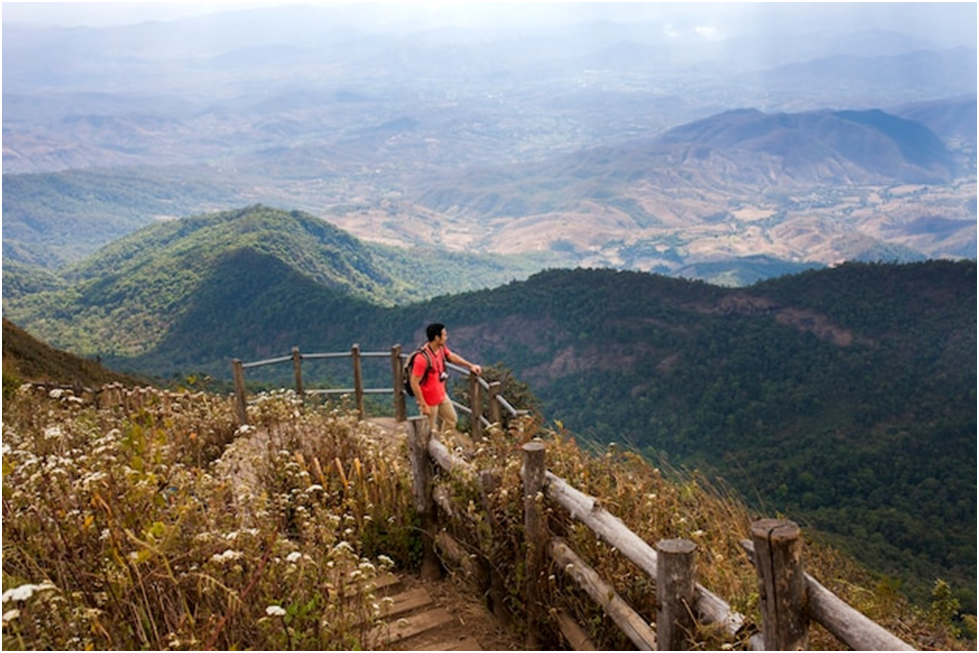Discover the Spiritual Significance of Mount Kailash Trek and Its Impact on Your Journey
Sacred to more than a billion followers
of Buddhism, Hinduism, and Jainism, Mount Kailash is considered one of the most
revered mountains on Earth. Each year, countless pilgrims make the journey
across the breathtaking and rugged terrain of Western Tibet to pay their
respects and perform the kora, or circumambulation, around this holy peak. It
is one of the world's most sought-after overland trips in the world, and
despite the high altitude, it’s surprisingly accessible.
Here's a short overview of the spiritual
significance of the Mount Kailash trek and the impact it
can have on you if you join a Mount
Kailash trek.
Religious significance
Mount Kailash holds great importance for
four major religions in Tibet: Hinduism, Buddhism, Jainism, and Bon. Because of
this, it attracts thousands of devoted pilgrims who come to walk around the
mountain as part of a sacred journey.
Many beliefs surround this mysterious
mountain. For Hindus, it is seen as the home of Lord Shiva, while Jains view it
as the place where Rishavdev achieved Nirvana. In Tibetan Buddhism, Mount
Kailash is known as the home of Chakra Samvara Demchog and the famous Tibetan
yogi Milarepa.
Despite the different beliefs about Mount
Kailash, one thing is clear: it is regarded as a holy place that should not be
climbed. Instead, pilgrims engage in what is known as a ‘kora,’ which involves
walking clockwise around the base of the mountain. This practice allows them to
show their respect and devotion while taking in the stunning scenery.
Challenge your limits
The trek around Mount Kailash is quite a test
for anyone willing to take it on. While many pilgrims manage to walk the
circuit in just one day, most Western visitors usually need two to four days to
complete the entire trail. With the kora reaching an elevation of around 5,000
meters, the trek can be pretty demanding, even for those who are experienced in
hiking high altitudes.
Physically, you will push yourself to
your limits. You'll face rough terrain, extreme weather conditions, and high
altitudes. But despite the physical challenges, many who have completed the
trek around Mount Kailash have described it as a life-changing experience.
What you need to be aware of before starting is that altitude sickness can be
a real danger, especially if you are not used to high altitudes. Give yourself
a few days to acclimate before starting the Mount Kailash trek, and listen to your
body during the kora. If you experience symptoms such as headaches, dizziness,
nausea, or difficulty breathing, take some rest and make sure to have medicine,
food, and water on hand.
The mountain is full of mystery.
If you are drawn to mysteries, Mount
Kailash is full of them! This mountain is steeped in ancient stories, religious
beliefs, and even modern puzzles. It is a wonderful spot for those who enjoy
exploring the unknown.
You can meet pilgrims from different
corners of the world, and every one of them has a story to tell about their Mount Kailash trek. Make use of your time interacting with
different people in the area. Ask them about their reasons for joining the trek
and listen to their experiences. You will be amazed by how many different
perspectives you can gain just from talking to fellow travelers.
Monasteries
Tradition tells us that there used to be
eight monasteries around Mount Kailash, but now only five lovely ones remain.
Each monastery has its own charm and history, so make sure to stop and take in
the peaceful atmosphere. You may even be able to participate in some traditional rituals or learn about the
cultural significance of these monasteries from local Tibetan guides.
When to Visit Mount Kailash?
The
rainy season in Tibet falls during the summer months, from July to August.
While this time isn’t necessarily bad for visiting Mount Kailash, it isn’t
ideal either. Since you'll likely be camping during your Mount Kailash trek,
it's best to avoid visiting from November to March due to the chilly nights and
the potential for snow.
The best
months for a Mount Kailash trek are late April to early June and from September to the
end of October. During these months, you can expect sunny days with clear blue
skies and pleasant cool nights, which makes for a much more enjoyable camping
experience. Between May and June, the
Saga Dawa Festival takes place, so if you want to witness a spiritual
celebration and join in the festivities, this would be an ideal time to visit.
Tibet
Shambhala Adventure has been a trusted tour operator in Tibet for 19 years,
offering a variety of tours and trekking experiences across the region. We are recognized
by the Tibet Tourism Bureau as one of the top four best Tibet tour companies in
2023, and we always strive to provide better services every year. Call our
customer service team at +86-13908907271 to talk to a representative.


Comments
Post a Comment